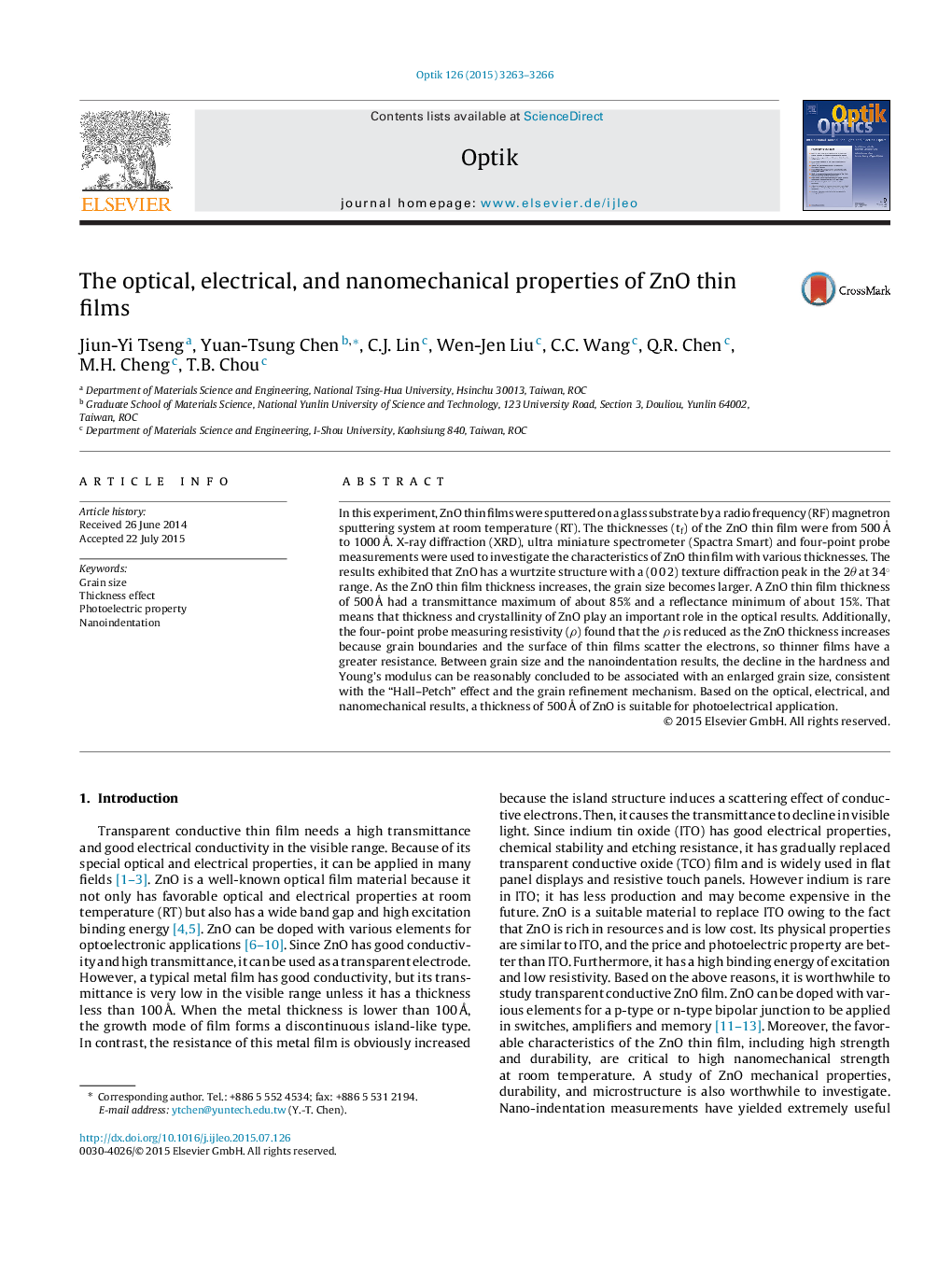| Article ID | Journal | Published Year | Pages | File Type |
|---|---|---|---|---|
| 846921 | Optik - International Journal for Light and Electron Optics | 2015 | 4 Pages |
In this experiment, ZnO thin films were sputtered on a glass substrate by a radio frequency (RF) magnetron sputtering system at room temperature (RT). The thicknesses (tf) of the ZnO thin film were from 500 Å to 1000 Å. X-ray diffraction (XRD), ultra miniature spectrometer (Spactra Smart) and four-point probe measurements were used to investigate the characteristics of ZnO thin film with various thicknesses. The results exhibited that ZnO has a wurtzite structure with a (0 0 2) texture diffraction peak in the 2θ at 34° range. As the ZnO thin film thickness increases, the grain size becomes larger. A ZnO thin film thickness of 500 Å had a transmittance maximum of about 85% and a reflectance minimum of about 15%. That means that thickness and crystallinity of ZnO play an important role in the optical results. Additionally, the four-point probe measuring resistivity (ρ) found that the ρ is reduced as the ZnO thickness increases because grain boundaries and the surface of thin films scatter the electrons, so thinner films have a greater resistance. Between grain size and the nanoindentation results, the decline in the hardness and Young's modulus can be reasonably concluded to be associated with an enlarged grain size, consistent with the “Hall–Petch” effect and the grain refinement mechanism. Based on the optical, electrical, and nanomechanical results, a thickness of 500 Å of ZnO is suitable for photoelectrical application.
